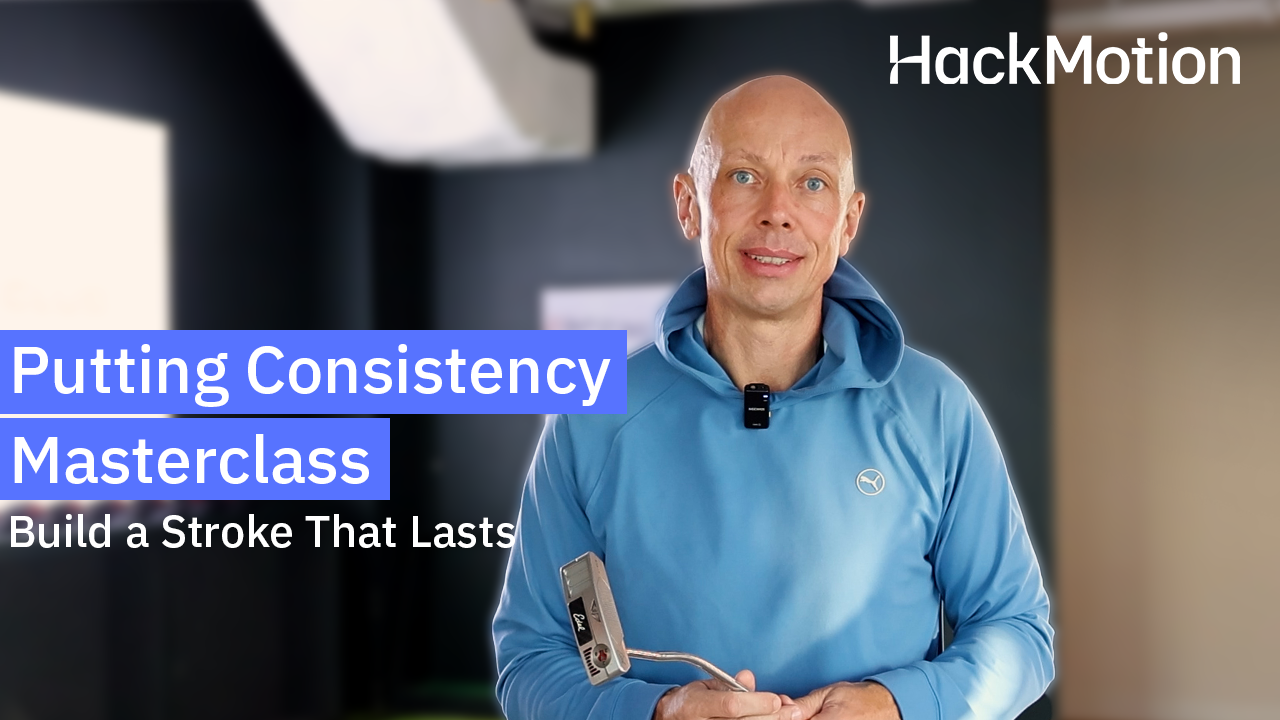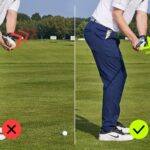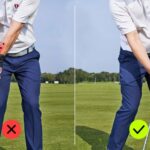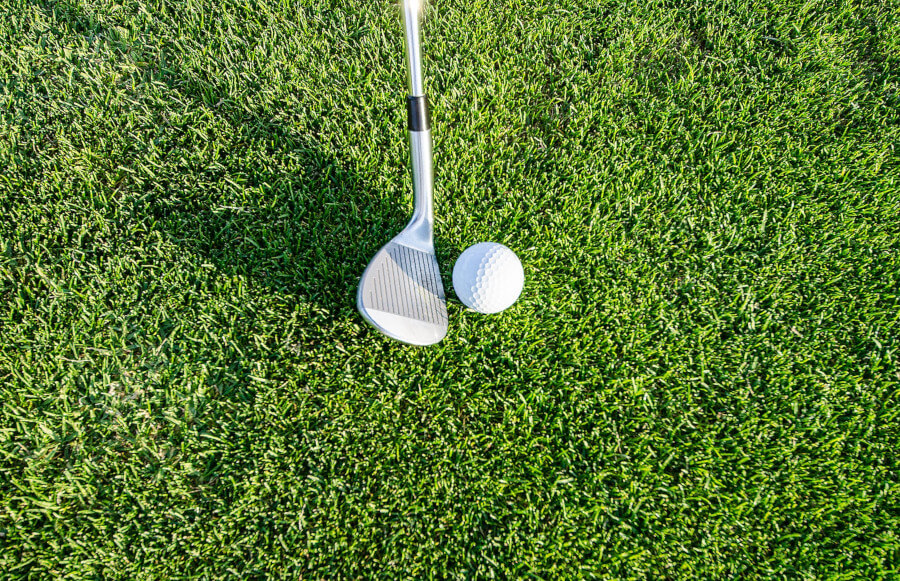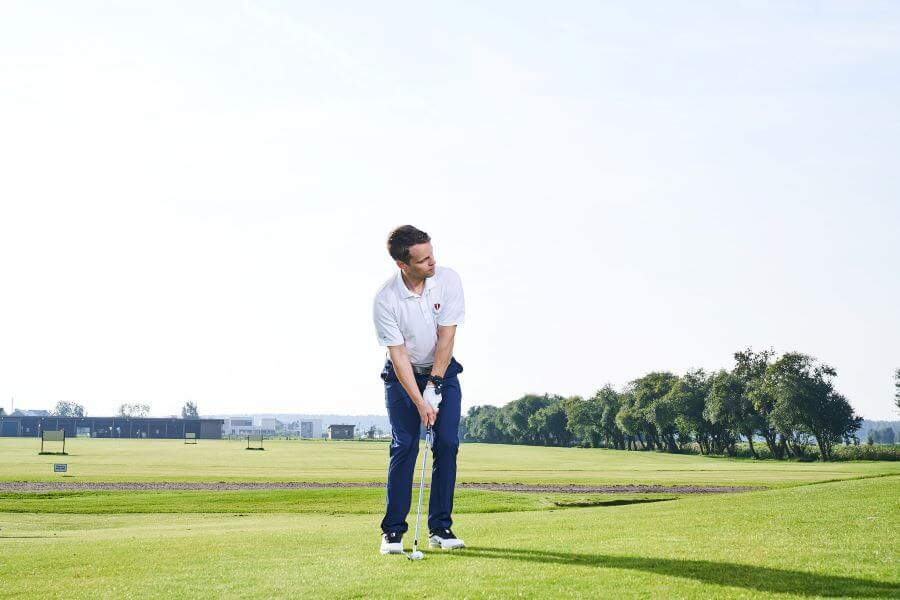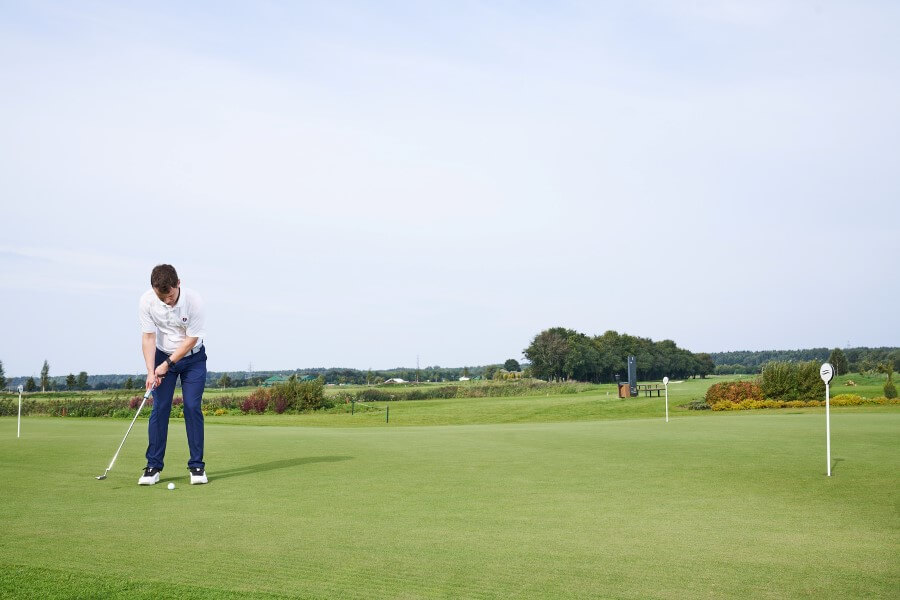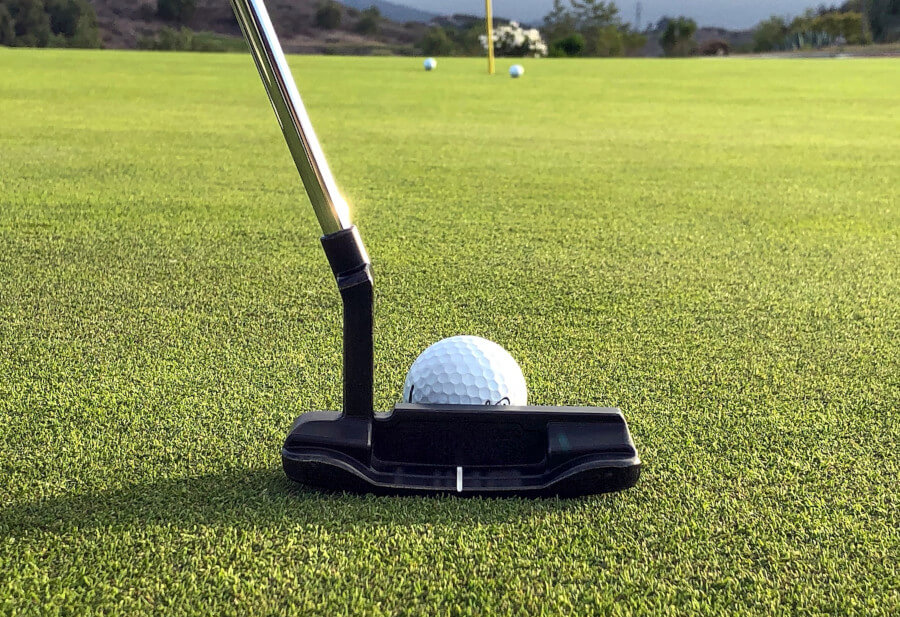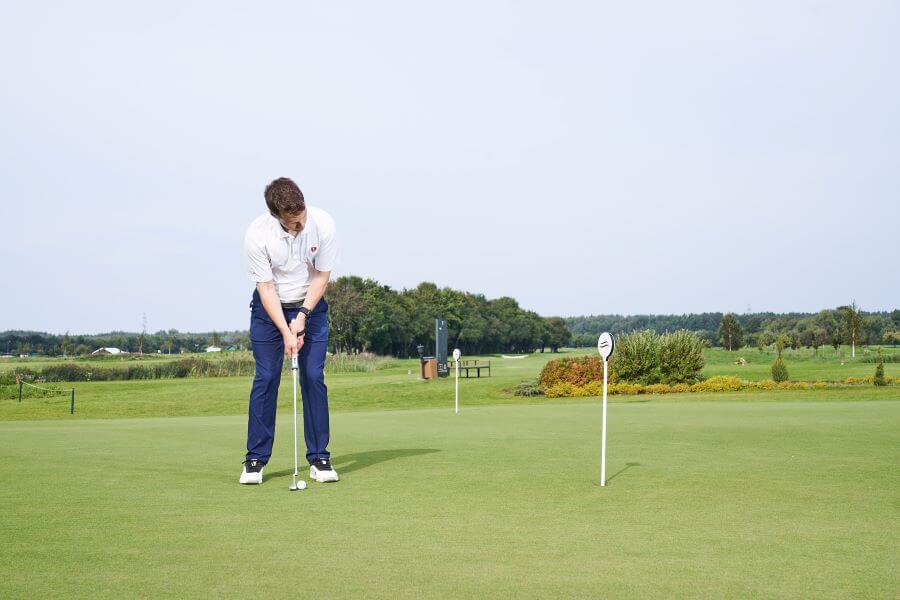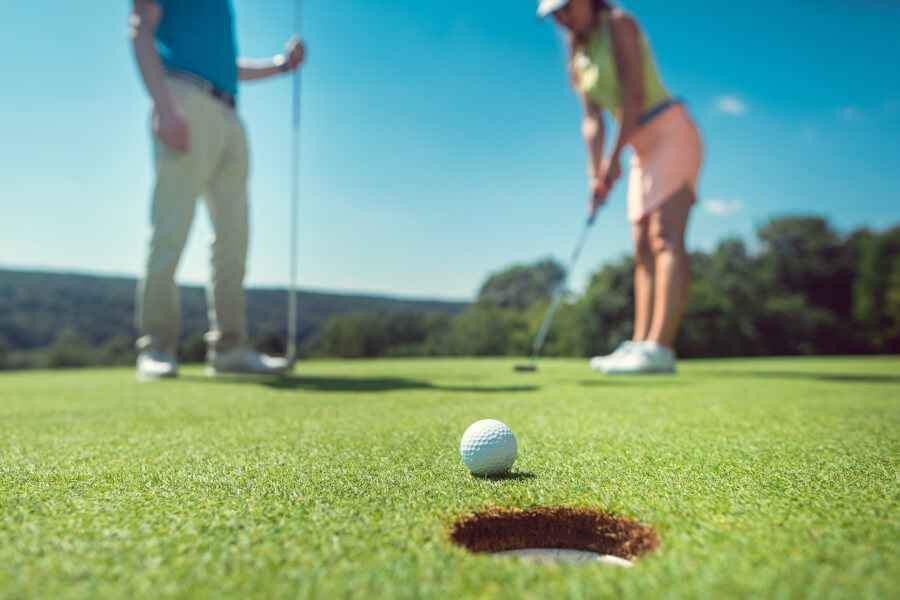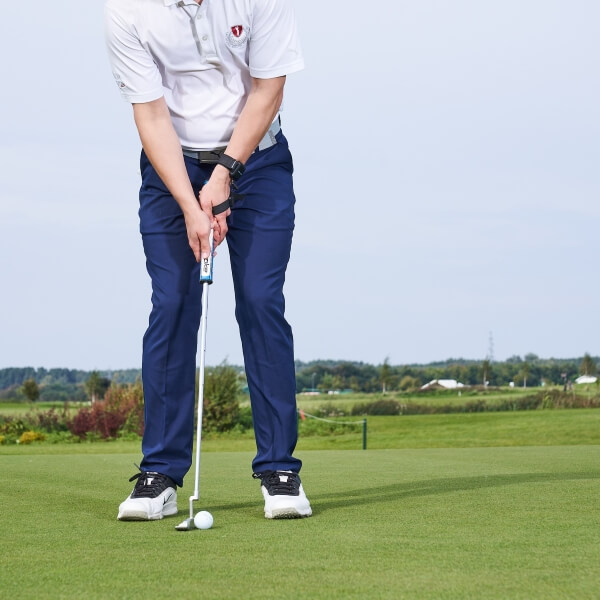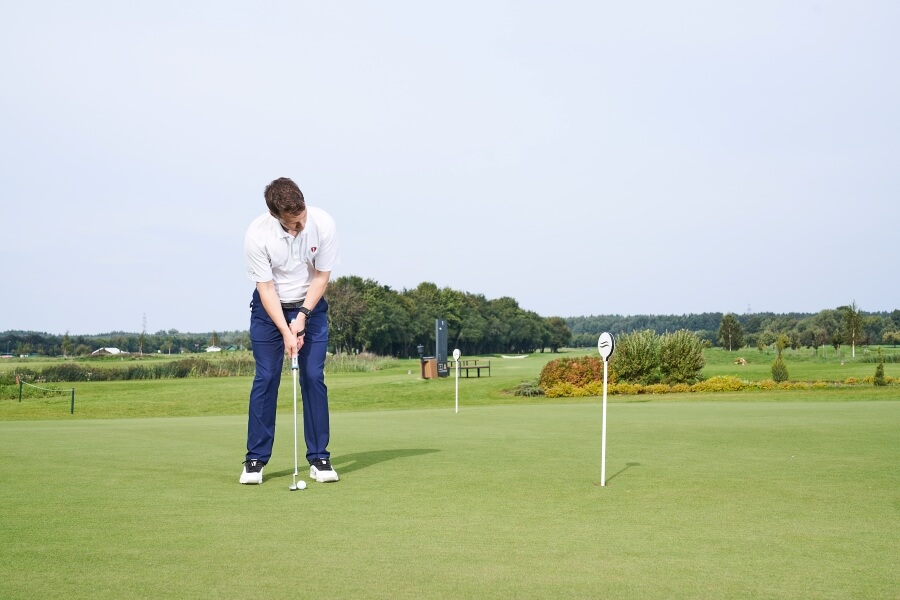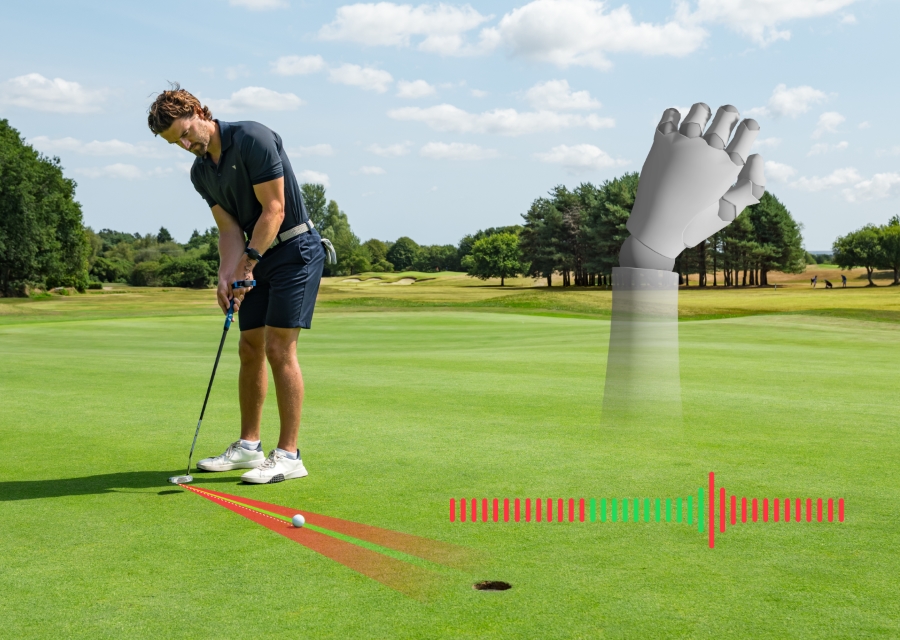How to Stop Pushing Putts: Proven Tips & Drills to Keep Every Putt on Line
Putting is already hard enough, so we don’t want to make it more difficult by pushing putts outside the hole.
Great putters are confident and knowledgeable about their strokes, allowing them to focus their efforts on green reading and distance control.
To eliminate pushed putts from your game, you must utilize these tips and ingrain them into your game using the accompanying drills. There is also a bonus equipment hack that could make all the difference the next time you stand over even short putts.
Grab your putter and head to the practice green right now with the information listed below.
Stop Pushing Putts (Key Takeaways)
Understanding the theory behind pushing putts and addressing the issues directly is the best way to get your putts on target. But if you’re short on time, review these key takeaways at the bare minimum.
- Move your ball more forward to allow the putter face to square up at impact.
- Your shoulders should move in unison; don’t let the lead shoulder raise.
- Monitor wrist movement through impact and do not flip for power.
- Adjust your grip to a neutral position to get putts started on your intended target line.
- Keep your eyes over the ball at all times.
- Check your putter grip, especially if you bought it off the shelf.
Contents
5 Tips to Stop Pushing Putts and Sink More Putts
You may not need all of the tips below, but they will raise your golf IQ and help you prevent future issues if you understand and implement each one carefully.
Use them as a checklist next time you’re practicing your putting.
Adjust Your Ball Position
Pushing putts can start even before you hit the ball. Some setups promote pushing, so no matter how many swing changes you make, your putts will always push.
Finding a ball position that works for your stroke is the first step to ensuring straighter putts.
Pushers tend to have the ball too far back in their stance. This causes the putter to hit the ball too early with an open face, especially on longer putts.
While you do want some forward shaft lean at address, ensure the butt end of your putter is pointing at your nose. If it points to your lead eye, then the ball is too far back in your stance.
Control Your Shoulders
It’s easy for the lead shoulder to lift during or before impact, as excitement and anticipation can be overwhelming when putting.
If you find that you push putts when they mean the most, then it’s important to monitor your shoulder movement and work on maintaining stability to achieve the perfect putting stroke.
Your shoulders should rock evenly back and forth to create the backswing and follow-through. If your shoulders rock smoothly during the backswing but then lift through impact, you will cause pushed putts.
This typically manifests in the form of the classic ‘chicken wing’ movement with the lead arm. Ensure both arms are hanging straight down, both shoulders are parallel to your target line, and both are relaxed.
Neutralize Wrists
Too many amateurs and even intermediate golfers flip their wrists during their putting stroke. Not only does this cause pushed putts, but it also causes inconsistent strikes, which leads to poor distance control.
The best way to prevent wrist flipping or any type of unnecessary wrist movement is with the Hackmotion system.
Most people recognize Hackmotion for its full-swing benefits, but the sensors and app are also programmed to address and correct wrist action in putting.
It helps you recognize the subtle wrist movements that the naked eye cannot see. It will alert you when your wrists are out of position and even suggest drills to address your specific issues.
Wrist Flexion/Extension
Wrist flipping is when your lead wrist extends and your trailing wrist flexes through impact.
Simply keeping your wrists neutral can be a difficult task for golfers to do on their own, and not addressing it will only make pushing putts more frequent.
HackMotion Putting Flexion / Extension Drill
Get a feel for the wrist movement that controls your putter’s loft.
Wrist Radial/Ulnar
Radial and ulnar movement is more commonly referred to as hinging and should not be present in any putting stroke.
However, amateurs and those who have not been professionally trained can adopt this bad habit, especially on longer putts.
HackMotion Putting Ulnar / Radial Drill
Get a feel of the wrist movement that controls the plane of the putter.
Optimize Your Grip
Holding the putter incorrectly is another setup issue that causes pushed putts. There is more leeway when it comes to fundamental putter grips, but to avoid pushed putts, your hands, fingers, and wrists must work together and be comfortable.
Optimal putting grips that reduce pushes for more putting stability include the following:
- Thumbs on top of the shaft pointing straight down.
- Palms facing each other.
- Wrists in a neutral, flexed, and radial position.
- Fingers can be overlapped or interlocked as long as the fingers of your top hand are comfortably securing the back of the grip.
Eyes Inside Target Line
A simple fix may require you to adjust your posture slightly so that your eyes are directly over the ball and your target line.
Putting is the only shot in golf where we can do this, and it’s a huge advantage, so all golfers should confirm that their lead eye is directly over the golf ball.
Pushing putts can be caused by having your eyes inside the target line. This will cause your hands and arms to work away from your body through impact, thus creating an in-to-out swing path that pushes the ball outside your target line.
To check your eye position, take your normal address position and then drop a ball from between your eyes. The dropped ball should hit the ball on the ground. It’s best to have a friend drop the ball for you so you can maintain your natural setup position.
Bonus Equipment Tip – Flat-Sided Putter Grip
If you’re doing everything above and still pushing putts, then it could be an equipment problem. The putter is the only club in your bag that is allowed to have a non-circular grip as per the USGA rules of golf.
However, if the grip is not installed correctly or has twisted over time due to being taken in and out of your bag so many times, you may be gripping the putter with a slightly open face, which causes pushed putts.
Look directly down the grip to see if the flat side represents a square putter face. You can also have a few friends check for you as well to confirm. If you’re unsure, the safest approach is to use a standard circular grip and square the clubface yourself. That way, you’ll know 100% that the face is square on every putt.
Drills to Help All Golfers Stop Pushing Putts
Knowing why and how you push putts is the first step to recovery. The second and final step is to incorporate practical drills that will train your body to avoid pushing putts when it counts most, on the course.
Train smarter at home—putting, short game, and full swing. Start with these putting drills to practice at home, then expand your routine with our full guide on how to practice golf at home.
Stickers for Your Grip
Perfect your grip by keeping your wrists, fingers, and palms in a neutral position from setup to follow-through.
The Hackmotion sensors are designed to help with this, but you can also use this old-school drill. Stickers work best, but you can also use a wet paper towel or napkins.
- Video Timestamp: 0:30-5:58
Stickers for Your Grip – Step by Step:
- Place a sticker on each of the radial bones on your wrists.
- Ensure they are both visible and pointing straight out away from your body.
- Take practice strokes, ensuring that both stickers remain pointing in the same direction.
- You can hit balls with this as well, but don’t focus too much on the stickers. Try to look at the ball and use the stickers as a reference in case your grip changes.
Chopstick & Coin Drill
For this drill, you can use your Hackmotion for its technological advances as well as its physical attributes.
The combination will provide you with feedback that you can both see and feel. It will target golfers whose main issue is flipping the wrists through impact.
- Video Timestamp: 1:20 – 5:51
Chopstick & Coin Drill – Step by Step:
- Insert a chopstick or pencil under the Hackmotion wrist strap so it runs along your thumb, crosses your wrist, and goes a few inches up your forearm.
- At the bottom of the chopstick, secure a coin between the chopstick and your thumb bone.
- Take practice putting strokes while ensuring the coin does not fall out.
- Hit putts while maintaining the position of the coin so there is little to no movement in your wrists.
Alignment Stick Shoulders
Preventing your lead shoulder from raising is paramount for those who want to stop pushing putts.
Since this is such an instinctive move, golfers need a drill that unifies their shoulder movement with the rest of their putting stroke. This drill does exactly that.
- Video Timestamp: 2:44 – 6:02
Alignment Stick Shoulders Drill – Step by Step:
- Attach two alignment sticks using a small rubber band about 5 inches from one end.
- Take the long ends of the alignment sticks and insert them under each arm.
- Address a ball using your normal putting stance, but rest the top end of your putter in between the two alignment sticks where the elastic band joins them.
- Take your putting stroke by rocking your shoulder in unison with each other and with the putter head.
- Hit putts to gain the sensation through impact and into the follow-through without raising the lead shoulder.
Double Gate Drill
A square club face is the first line of defense against pushed putts. This can be hard to see with the naked eye, so a drill like this is necessary.
You can combine this drill with the ones above as well to optimize your practice time and still get the most out of it.
- Video Timestamp: 0:48 – 1:17
Double Gate Drill – Step by Step:
- Set up two tees an inch outside the heel and toe of your putter head.
- Set up two more tees six inches in front of the first two.
- Place a ball between the first pair of tees and take your stroke.
- Ensure your putter head passes through the first and second set of tees at the same time.
- If the heel passes through the second set before the toe, then your putt will be pushed.
Final Thoughts
Pushed putts can be fixed with a few dedicated practice sessions. Now that you’re armed with the correct tips and drills, you can eliminate pushed putts 99% of the time.
Pushing putts isn’t the only thing that can prevent your ball from dropping in the cup. It’s essential to practice regularly, and using a system like Hackmotion is the most effective way to do so. It tracks your mechanical movements as well as tempo and serves as a professional putting coach directly on your phone.
Instead of diagnosing one issue at a time, use the Hackmotion sensors and app to your advantage to stay ahead of problems before they arise.
